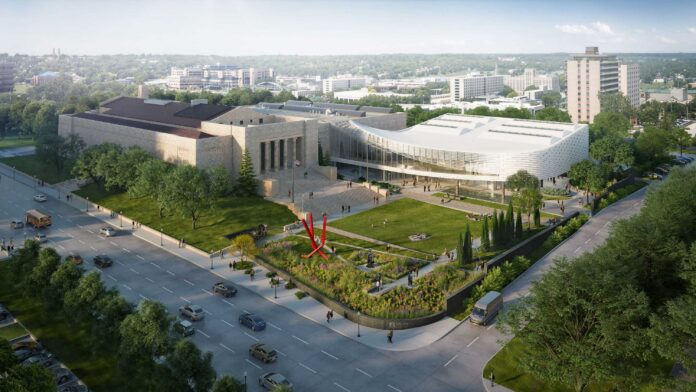The expanded and transformed Joslyn Art Museum in Omaha, Nebraska, will celebrate its civic dedication ceremony on September 10, 2024, welcoming the public for the first time to a complete reinstallation of its distinctive collection, including numerous recent acquisitions, a full restoration of its original building, and the debut of its 42,000-square-foot Rhonda & Howard Hawks Pavilion designed by Snøhetta.
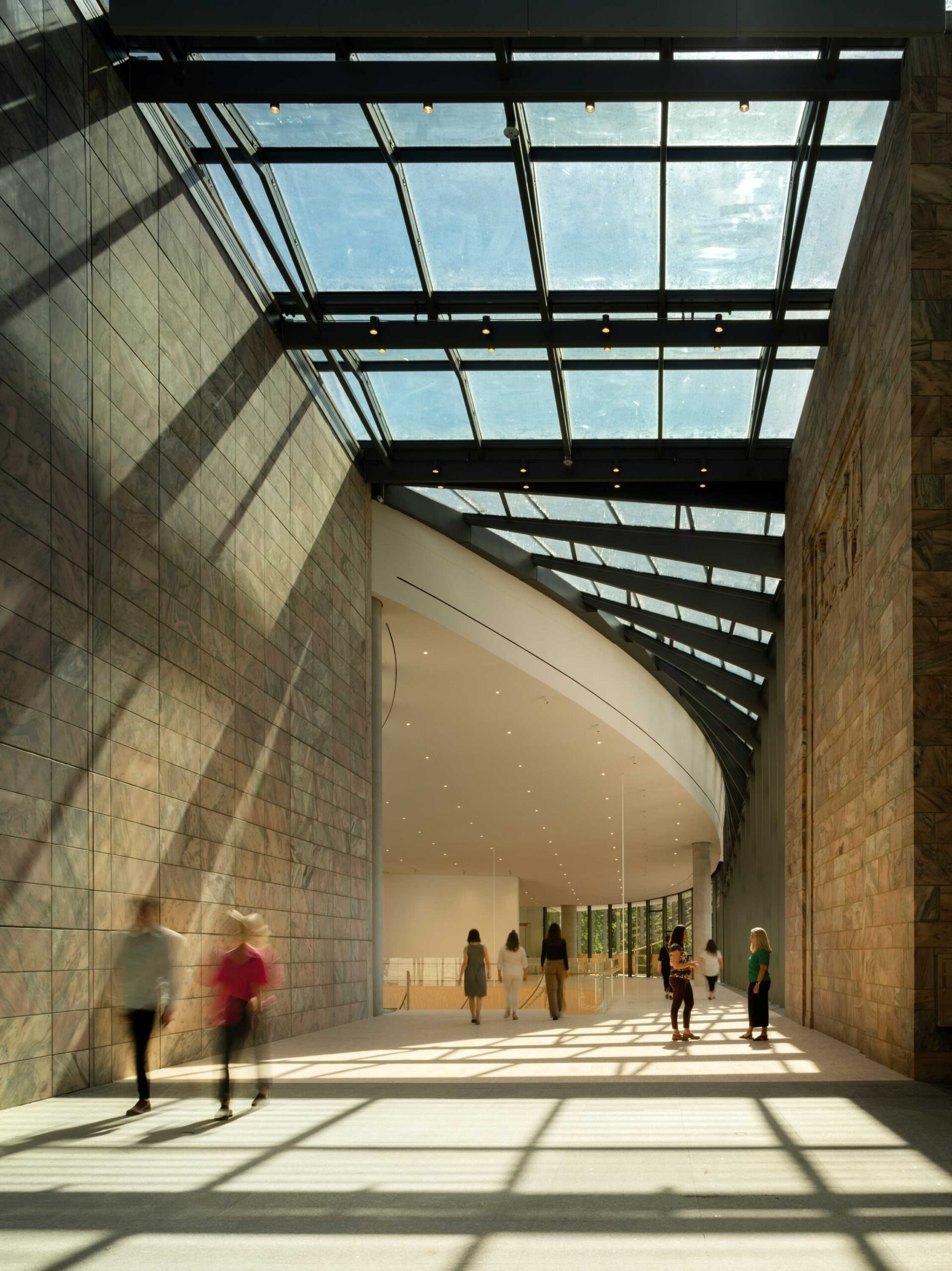
More from the museum:
Open to all free of charge, The Joslyn has increased gallery space by more than 40 percent for its wide-ranging and fast-growing collection, reoriented its entrance sequence through three acres of redesigned and rejuvenated public gardens, and created a dazzling new visitor experience, highlighted by an elevated entry garden featuring Mark di Suvero’s “Bodacious,” 2001, one of dozens of works in the Phillip G. Schrager Collection. The expansion and renovation project has taken place at the same time as billions of dollars in new investments are being made in the downtown and riverfront of Omaha, where The Joslyn is a vital resource for the city and a cultural landmark for the entire Great Plains region.
Three weeks of celebrations for the new Joslyn will begin with major donor events, a preview day for Museum members and community partners on September 8, and the ribbon-cutting and public opening on September 10. Festivities in the days that follow will include an educator open house, a homeschool families day, and the Young Advocates party, “Reimagined,” on September 28.
Jack Becker, Executive Director and CEO of The Joslyn, said, “On September 10, we look forward to welcoming everyone back to a Joslyn Art Museum that is both true to its proud history and thoroughly transformed. Snøhetta’s sensitive and innovative approach for reimagining The Joslyn enhances our existing buildings to give our ever-expanding audience a new experience while preserving our most cherished spaces, to reveal 5,000 years of human creativity from the world’s diverse cultures.”
Craig Dykers, Founding Partner of Snøhetta, said, “Honoring The Joslyn’s historic character while creating a fresh expression for the Museum’s future has guided our design. Our comprehensive reconsideration of the Museum grounds, the existing interiors, and the newest building all work together to create a more inviting entry for the growing spectrum of people that visit the Museum. Our goal has been to provide a harmonious place for guests, art, and gathering that will become a vessel for inspiration and creativity to flourish.”
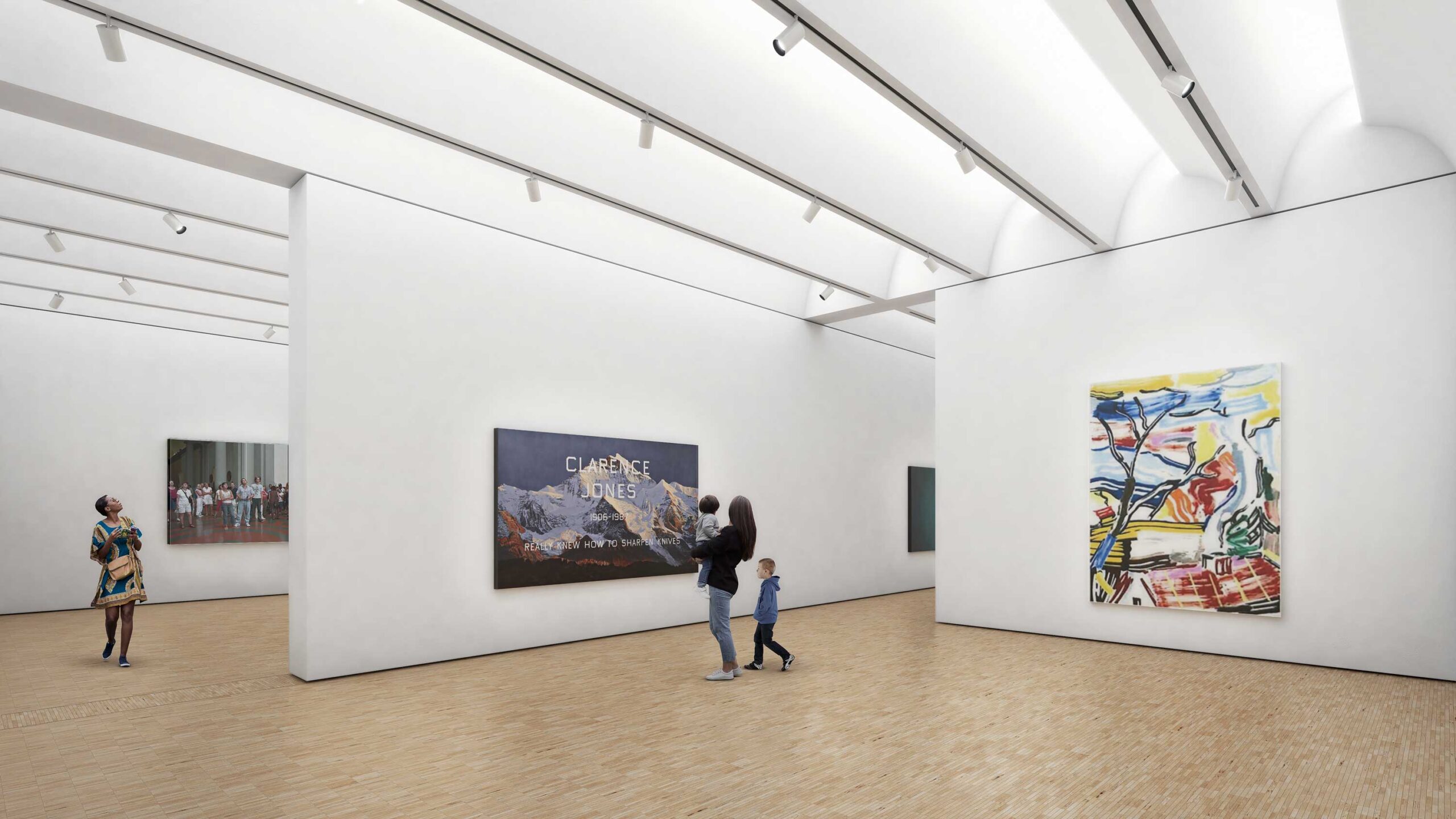
The 1931 Joslyn Building, designed by father and son John and Alan McDonald, stands side-by-side in the Museum’s public gardens with the 1994 Suzanne & Walter Scott Pavilion, the first commission in the U.S. by Norman Foster. The new Hawks Pavilion, designed by Snøhetta in partnership with Alley Poyner Macchietto Architecture, grows outward from an atrium that joins these two earlier buildings. In contrast to their rootedness, the Hawks Pavilion seems to twist and rise as it emerges, floating atop a transparent first floor that encloses the new main entrance, the Phillip G. Schrager Atrium, the Museum shop, and a multi-function community space. These main level areas ascend gradually to the existing buildings along a gently sloping, ADA accessible walkway. A striking, curved set of steps leads directly to the gallery level. The effect of weightlessness recalls the striking cloud formations above the Great Plains, as well as the deep overhangs and horizontal expression of Prairie School architecture.
To inaugurate the Hawks Pavilion, a suite of the new building’s light-filled galleries will be installed with the first presentation of the Phillip G. Schrager Collection. Comprising fifty-two paintings, sculptures, drawings, and photographs that encompass some of the most important developments in postwar and contemporary art, the collection is perhaps the most significant gift of art in The Joslyn’s history. Artists represented include Richard Artschwager, Lynda Benglis, John Chamberlain, Richard Diebenkorn, Jim Dine, Tara Donovan, Robert Gober, Mary Heilmann, Jenny Holzer, Robert Irwin, Mike Kelley, Roy Lichtenstein, Morris Louis, Brice Marden, Laura Owens, and Gerhard Richter. The presentation will be accompanied by a fully illustrated, 144-page catalogue published by the Museum featuring an in-depth essay on Phillip G. Schrager and collection works.
The Hawks Pavilion also includes the Museum’s first dedicated works on paper gallery. The inaugural exhibition will be “Ed Ruscha: Paper,” featuring drawings, prints, and photographs from Ruscha’s recent gift to the Museum as well as work from the artist’s collection. Born in Omaha, Ed Ruscha has given The Joslyn 18 paintings, drawings, prints, and sculpture from all stages of his career, from 1961 to 2017. The gift also includes a collection of Ruscha’s original artist books and is complemented by an additional gift from Ruscha of 20 works by his colleagues and friends in Los Angeles, including Terry Allen, Richard Artschwager, Joe Goode, Ed Moses, and William Wegman, dating from the 1960s through 2015.
The Joslyn Building will reopen with the first complete reinstallation of the permanent collection since the Museum’s inauguration in 1931. Bringing together artworks and artifacts across media, the new curatorial vision asserts the relevance of historical objects to contemporary concerns and diversifies the identities and experiences represented in the galleries.
This approach has transformed the American galleries, which now weave together more than 150 years of creativity across cultures and artistic traditions, no longer separating works by Indigenous and Euro-American artists and with a special focus on the Great Plains and Missouri River as sites of exchange. Iconic works by Albert Bierstadt, Mary Cassatt, and Grant Wood are reinterpreted to address the history of U.S. expansion from 1800 to 1950 and its continuing environmental and social impacts. More Native American art is on view than ever before, including notable works by Howling Wolf and Oscar Howe and exquisite examples of beadwork, quillwork, and ceramics by Indigenous women.
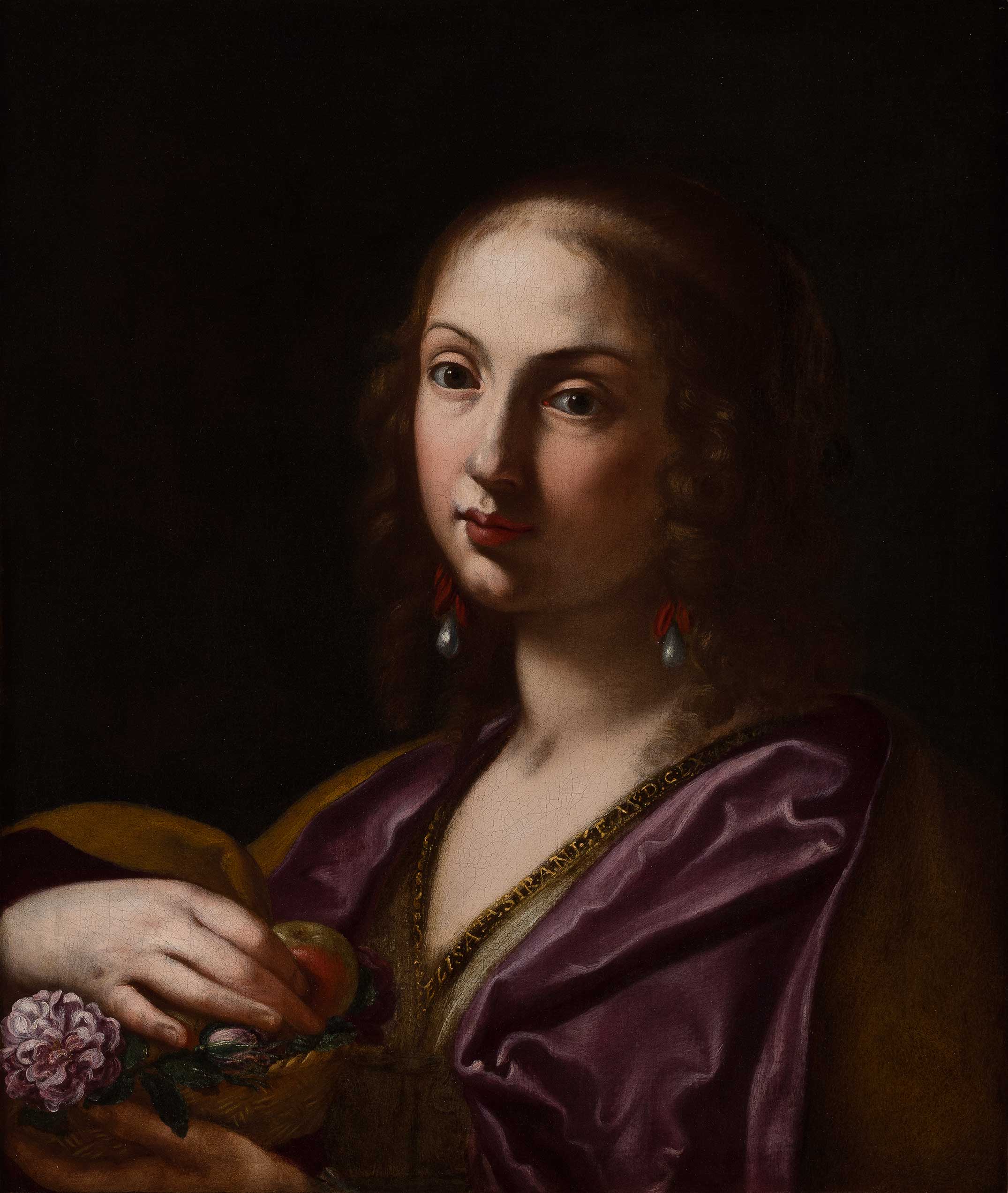
Significant additions to the collection on view in the 1931 building when the Museum reopens will include works by Elisabetta Sirani, Émile-Jean-Horace Vernet, Grafton Tyler Brown, Thomas Hudson, Robert S. Duncanson, and Elizabeth Catlett.
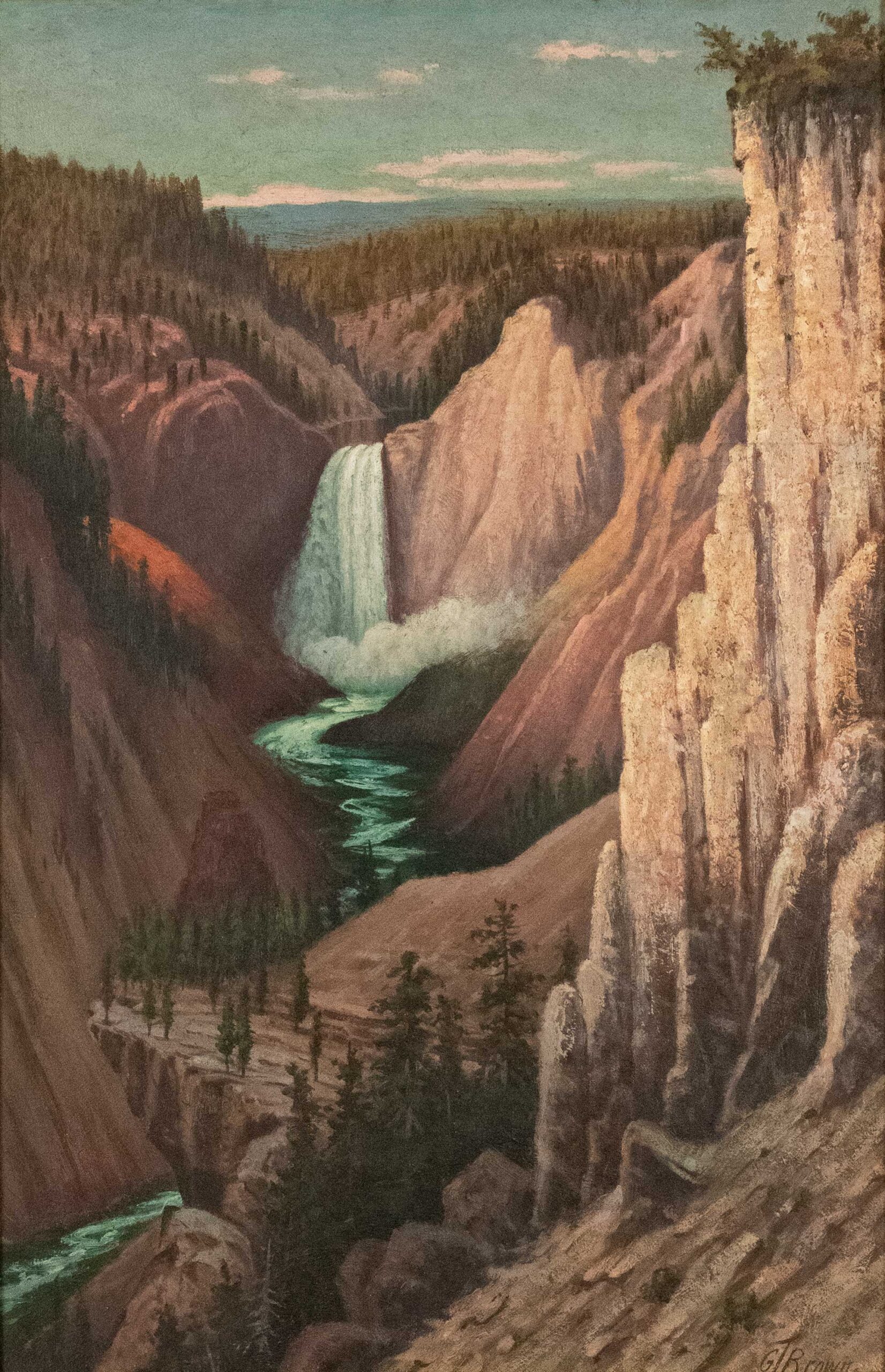
For more information about the Joslyn Art Museum artworks and reopening, please visit www.joslyn.org.

